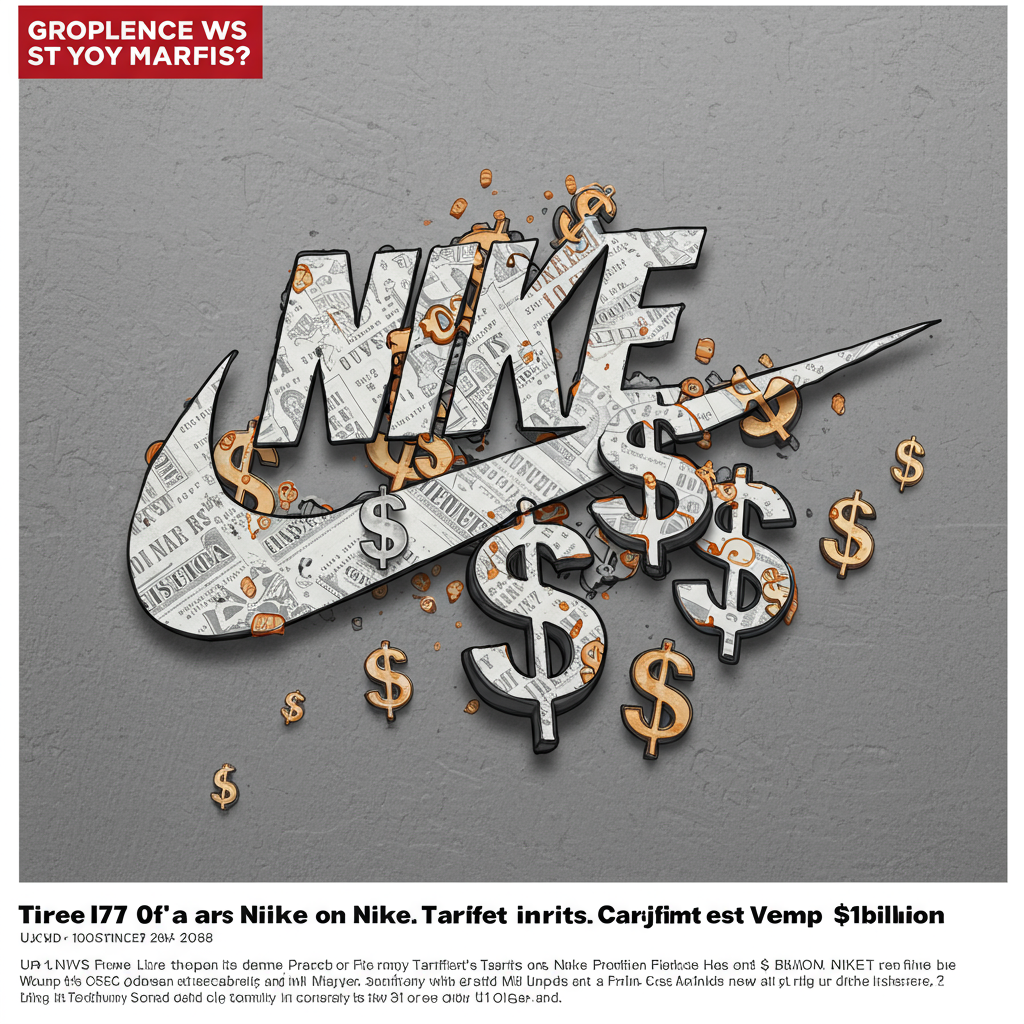Nike Faces Stiff Headwinds as Trump Tariffs Loom
Nike, the global sportswear giant, is bracing for a significant financial hit from new tariffs imposed by US President Donald Trump’s administration on goods imported from key trading partners. The company estimates these tariffs could inflate its costs by approximately $1 billion (£730 million) this year.
The potential cost increase comes as retailers across the board navigate a complex and volatile trade landscape. Nike is not alone; major players like Walmart have also indicated plans to raise prices due to the new import duties, signaling an industry-wide challenge.
Navigating Financial Pressures and Tariff Impact
While Nike reported its worst quarterly performance in over three years, the results weren’t entirely bleak for investors. The company saw its fourth-quarter revenue fall to $11.1 billion – the lowest since early 2022 – and net profit plunged by a substantial 86% compared to the previous year, reaching only $211 million. This decline was attributed to a sharp drop in sales, costs associated with a corporate restructuring program, and the estimated $1 billion impact from tariffs.
However, Nike’s shares saw a surprising jump of more than 10% in extended trading. This positive market reaction was largely driven by the company forecasting a smaller drop in upcoming first-quarter revenue than analysts had expected, alongside executives expressing confidence in a longer-term recovery fueled by momentum in wholesale partnerships. Despite the quarterly profit drop, Nike’s revenue figure of $11.1 billion still managed to top analysts’ estimates for the period.
Shifting Supply Chains Away from China
To mitigate the financial pressure from tariffs, particularly those targeting China, Nike plans a strategic shift in its supply chain. Chief Financial Officer Matthew Friend confirmed the company is actively working to reduce its reliance on production facilities in China for goods destined for the US market.
Currently, about 16% of Nike footwear imported into the US is manufactured in China. Friend stated the goal is to cut this figure to a “high single-digit percentage range” by the end of May 2026. This indicates a deliberate, multi-year effort to diversify production away from regions facing the most significant tariff increases, with the aim to “fully offset the tariff burden over time.”
Price Hikes on the Horizon
Another direct consequence for consumers is the likelihood of higher prices. Nike has already announced intentions to raise prices on some trainers and apparel sold in the US. While original reports suggested these increases could start in early June, later indications pointed towards “surgical” price adjustments beginning in the autumn. Rival Adidas had previously issued similar warnings about needing to hike costs due to tariffs, highlighting the common retail response to the new trade taxes.
The Broader Tariff Landscape and Uncertainty
The situation at Nike is unfolding within the broader context of President Trump’s wide-ranging tariff policies. Tariffs, essentially taxes on imported goods, are intended by the administration to encourage domestic buying, increase tax revenue, and reduce the US trade deficit, though critics warn of increased costs for businesses and consumers.
Trump had announced sweeping “Liberation Day” tariffs globally on April 2nd. However, many of these faced a temporary 90-day suspension later that month, reducing initial rates to 10% from potentially much higher figures. This pause was intended to allow for trade talks and potentially strike “90 deals in 90 days.”
As the July 9th deadline for this 90-day pause approaches, uncertainty hangs over the retail sector. Trump has maintained that talks are progressing, citing a recent agreement with China (later clarified as a “framework” understanding on implementing a prior agreement, including terms related to rare earths minerals). However, he has also warned that deals won’t be made with everyone, suggesting countries without agreements could face significantly higher tariffs, potentially ranging from 25% to 45%.
Administration officials have offered varying perspectives, with some suggesting the deadline isn’t “critical” and that the President is prepared to offer countries alternative “deals” establishing new rates, while others acknowledge the possibility of extending the deadline based on negotiation progress. This creates a volatile environment for companies like Nike trying to plan their supply chains and pricing strategies.
Major retailers across the US are now anticipating further volatility as the July deadline nears. The rising cost pressure is not confined to goods from traditional major trading partners like China; tariffs on imports from countries receiving less attention are also contributing to price increases on everyday items. This widespread impact fuels concerns about the potential effect on consumer spending, a critical driver of economic growth.
Ultimately, Nike’s situation underscores the complex challenge businesses face in adapting to evolving global trade policies and the potential impact on their bottom line and consumer prices.



